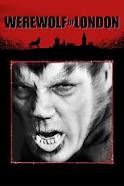
The phosphorescent wolf-flower blooms only under the rays of the moon
Wilfred Glendon (Henry Hull) is a well-known English botanist. He is in Tibet in search of the rare mariphasa plant. He finds the plant; however, he is attacked and bitten by a werewolf. Back in London he is approached by another botanist, Dr. Yogami (Warner Oland). Yogami warns him that the bite of a werewolf would cause him to become a werewolf as well. He also tells him that the blossom of the mariphasa is a temporary antidote for the disease.
Of course Glendon does not believe Yogami. At least not until he turns into a werewolf. The first time it happens, Glendon is able to use a blossom from the mariphasa to stop his transformation. Glendon’s wife Lisa (Valerie Hobson) and a childhood friend of hers Paul Ames (Lester Matthews) go to a party at Lisa’s aunt Ettie's. While they are away Glendon turns into a werewolf. He runs to his laboratory for the antidote only to find that Yogami has stolen the only two blossoms left.
As a werewolf Glendon goes out hunting, and kills. Each time there is a full moon he changes and hunts, and kills. Feeling remorseful he locks himself away and neglects Lisa. Finally the third blossom blooms, however, Glendon finds that Yogami has stolen it. Glendon realizes that Yogami is the other werewolf, and the one that attacked him in Tibet. Once more Glendon turns into a werewolf. He kills Yogami, and then goes looking for the one he loves the most.
“The Werewolf of London” was released in 1935 and was directed by Stuart Walker. It was the first werewolf movie made. Jack P Pierce did the make-up. Producers were concerned that Pierce's makeup effects would push the boundaries of censorship in the United States. They asked Pierce to tone down the animal qualities of the werewolf transformation scenes and asked him to make the werewolf appear more human in nature in order to gain approval of the censorship board. Pierce's first design for the creature would later be put to effect in The Wolf Man (1941).
Much of the werewolf mythology in the movie is made up. The idea that being bitten by a werewolf makes you a werewolf, that a werewolf changes under the full moon and that werewolves are a wolf/man hybrid is made up. In actual folklore, a person becomes a werewolf by practicing witchcraft, and can change into a wolf any time they wanat. The mythology from the film and that of others after it, heavily influenced pop culture views of werewolves to the point that these are now regarded as "official" mythology.
The opening scene in "Tibet" was filmed at Vasquez Rocks north of Los Angeles. The same place where Captain Kirk battled the Gorn in Star Trek’s "Arena."
Although I love “The Wolfman”, I have come to also appreciate “Werewolf of London”. The first transformation in “Werewolf of London” is an amazing sequence. The feel of movement makes the transition seem like it is happening in front of your eyes. Yes, Larry Talbot seems a more sympathetic person and he is the epitome of how a werewolf should act, but Henry Hulls portrayal was the first, and I don’t have a problem with a sophisticated werewolf.

